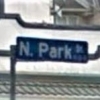--------------
Making it work: A guide to 100 properties, and who owns what
Jody Paterson
Times - Colonist. Victoria, B.C.: Jun 17, 2001.
(Copyright Times Colonist (Victoria) 2001)
It should have made it. Pop Culture had great stuff at decent prices, weird things like electric tulips and little dashboard hula girls that you couldn't get anywhere else. The staff was friendly, the service was good, and the store was easy to find.
So its closure a few months ago due to a lack of customers sent a shiver down the spines of more than a few downtown building owners familiar with the Broughton Street novelty store.
Its closeout was a defining moment, a statement of something bigger than just another store going out of business. If Pop Culture couldn't make it, then who can?
A downtown has to have magic, sparkle, a certain something that people can't find anywhere else. If they're going to give up easy parking and the comforts of uniformity to come downtown, it's going to have to be worth their while.
And so it becomes the job of those who love and profit from the downtown to make things work. They have to find the right combination to lure us from our suburban dens for food and entertainment, to put us in a sunny shopping mood and pull us down one street after another.
They need to encourage tourists without coming to depend on them, because they're a fickle lot. They need to make the place look welcoming without coming across like oppressors of the downtrodden. They need urban paths so those important shopping dollars can migrate. It's not easy.
On the whole, Victoria's downtown is splendid, a feast for the eyes of ocean and flowers and lovely old buildings. But that is only on the whole, because a careful walk through the downtown reveals small but worrisome pockets of decay.
Things are not particularly well on Gordon Street, or on several block-long stretches of Douglas.
The empty storefronts along lower Government Street are filling, but we who live here aren't likely to be browsing through them anyway: They're tourist shops, one after the other, full of T- shirts and sunglasses.
"A friend of mine called it Lahaina," says downtown real-estate expert Andrew Turner, a derogatory reference to the Maui whaling town now loaded with "cheap T-shirts and tattoos."
Developer Mohan Jawl worries, too. His building at the corner of Humboldt and Belleville streets is one of the few in that neighbourhood that hasn't given itself over to souvenirs.
"That area near the Causeway should be really strong retail," says Jawl. "The more that we let good tenants go, the less the tourists will be interested."
Victoria is a city still waiting to take the next step, the one envisaged in a civic report 11 years ago on the future of Victoria's downtown.
Build walkways around the harbour, wrote the authors, and push the Government Street retail strip past Johnson. Awaken Store Street. Better still -- extend it to Finlayson Avenue, creating a whole other entrance to the downtown.
The downtown community at that time foresaw the revitalization of abandoned industrial buildings along the waterfront, and a spirited downtown full of stores and people.
It pointed with pride to the vibrancy of a stretch such as Fort Street's Antique Row, a sad reminder these 11 years later of how far that part of the street has drifted from the days of more than 20 high-end antique stores.
Blame it on civic torpor, or on everybody being busy with other things. But more than a decade has passed and we're still saying the same things, and there's a feeling out there that it's time to get things moving.
"I think there's a general frustration that we've been talking for a long time and haven't made any progress," says Jawl, who owns five buildings downtown. "It's not a problem peculiar to this city, but it seems that consultation and process have become preoccupations. At some point, that has to give way to leadership."
No question, good things have happened. Herald Street is transforming, and a neighbourhood really was created at Harris Green. Wharf Street is still charming. And the new trend of building funky apartments downtown above street-level retail is bound to build crowds on city streets. Yates Street is showing the smallest signs of life, and more development is planned for Chinatown.
But if Victoria is to remain the jewel that it is, it's going to take more than that.
Victoria has a unique downtown. A large number of the buildings are owned by locals, in contrast to other cities where owners are more likely to be outside investors. Some Victoria families have owned their buildings for generations. And whether it's for sentimental reasons or fear of being taxed on capital gains, local buildings aren't bought and sold very often.
But that's not all that sets the city apart. Because Victoria is a capital, its biggest office customer is the provincial government. B.C. Buildings Corp., which manages government buildings and office leases, owns 25 buildings downtown. Two-thirds of all private office space downtown is occupied by government staff, with BCBC handling the leases.
Turner considers the corporation the strength and the weakness of downtown. Provincial revenues booming? Good news for the downtown office sector. Everything slow? Good luck. But on the upside: at least there's always a tenant.
Look up past the street-level retail of the downtown, and you'll see buildings of three, four, nine or more storeys. Only about an eighth of downtown space is given over to street-level retail. The rest is for offices, and lately, residential.
BCBC is obviously a welcome customer, but its mood swings can really hurt. When government workers relocated into Jawl's new waterfront office space by the Selkirk trestle a few years ago, the downtown vacancy rate rose to 11 per cent. Rents dropped as much as 40 per cent.
All is still not well with rents, which remain 10 to 20 per cent lower than they were pre-1995. But the vacancy rate has improved to four per cent, tight enough that Turner has begun worrying that there isn't enough space.
"I'd be happier at seven or eight per cent," he says. "Then you know that there's a place for tenants to move if they need the space. Plus the landlords have a little of the fear of god in them."
There were a lot of unhappy faces downtown when the government made the big shift to Jawl's Sawmill Point development, but not everything has turned out badly. The high vacancy rate brought plummeting rents, which attracted fledgling high-tech firms that couldn't have otherwise afforded offices downtown. Turner sees them as the downtown's best bet. The unusual work hours their staffs keep and the fact that they're often young and single make them perfect candidates for living and working downtown. Their need for restaurant meals and entertainment make them the dream date for street-level retailers looking for customers. "They're a different breed," says Turner. "They're the guys who aren't punching the clock and going home at five."
That has always been the goal, to get people downtown and feed that virtuous circle of profit. The shoppers spend their money. The stores pay their rent. The building owners pay their taxes. The city uses the revenue for good deeds.
But it's an art, luring them. And nothing can be taken for granted.
For instance, that panhandlers and property owners will make their peace. I talked to at least 30 building owners and almost every one of them listed the same three threats to the health of the downtown: panhandling, graffiti and parking tickets.
"I believe in how great and bright the city could be, but there's a grittiness to it these days," says downtown developer Fraser McColl Jr. "Victoria has beautiful bones and you can walk everywhere, and I'm a city mouse who loves being downtown. But when you're walking out of Chapters and there's a kid out there hooting and howling and nobody doing anything about it, something's wrong."
Building owner Art Kool witnessed a drug deal the other day that was anything but furtive. Then he came across a group of kids heaped in the entryway of Bob Cross's fancy new remake of his Douglas Street meat market, beer cans everywhere.
Panhandlers are people too, agree the owners. But they're going to be panhandling to ever-smaller numbers of downtown shoppers if something doesn't give.
"I don't think we've screwed up the downtown, but we're working on it," says Kool. "We all know that what we need is people who live and work downtown. Well, how can I ask them to live there when this is what they see out their windows?"
- - -
The building owners' resentment at a perceived lack of action on street issues was one of the major factors in their decision to blow up the Downtown Victoria Business Association last month. There was grumbling for months that the association was no longer listening to owners, and its blithe request for more operating money sealed its fate.
The owners acknowledge that dealing with panhandling and graffiti are tough challenges. But they figure it's get tough or die. "I've done a lot of travelling lately, and where Victoria is going is kind of scary," says developer Gerald Hartwig. "Go up and down the coast, and you'll see cities that people have worked hard to make people- friendly. We're way behind.
"We've got some major changes to make if we want to call ourselves people-friendly. That term takes in everything from clean streets to painted buildings to no street people to friendly service, and an exchange rate that's equivalent to the banks."
Building owners want to see the worst of the graffiti vandals prosecuted, and given sentences that include helping with the cleanup. Shukry Regep, who owns the Sweet Memories ice-cream parlour building on Government Street, says the vandals are relentless.
"I looked down the street this week at what used to be the Old Age Pension hall, all painted beautifully now and looking good," says Regep. "Somebody had come along and put graffiti all over it. There's nowhere you can go without seeing it."
As for parking, the owners can only hope the city sees the folly in the brutal efficiency of its parking-ticket commissionaires. "Go into a store for five minutes and you get a $7.50 ticket, which the city is talking about doubling," grumbles Ron Greene, who owns the Capital Iron building and neighbouring property on Store Street. Several other owners had similar anecdotes. Hartwig recalls getting a ticket after nipping into a store to look for change for the meter. Eric Charman, who owns property on Yates Street, was particularly galled by one ticket he got "14 minutes before six o'clock and not a car anywhere else on the block."
Mayor Alan Lowe says he's listening. Curbing panhandling will be the toughest, he says, but the hiring this month of eight new police officers to do foot patrols downtown should at least keep things more civil. As well, the courts are also showing interest in getting tough on graffiti vandals, says Lowe, noting that Saanich is in the midst of prosecuting one such vandal who caused an estimated $100,000 in damage.
Encouraging people to live downtown will also help. "We have a problem with street people," notes Turner. "But what it's going to take to fix it is the citizens of Victoria reclaiming their downtown."
Lowe has struck a task force in the wake of the collapse of the downtown business association, a mix of councillors, business owners and tourism types. Panhandling and graffiti are at the top of their to-do list.
Fine, say the owners. But come up with something more meaningful than a recommendation for further consultation.
- - -
Street issues aside, there are other challenges. Retailers on lower Government Street are happy enough with their pedestrian traffic, but other streets would love to share in those easy tourist dollars.
That requires interesting retail space block after block, to draw shoppers deeper downtown. Shoppers browsing Government Street routinely go no farther than its intersection with Johnson Street. They see the block-long Forests Ministry building on one side and the side wall of a hotel on another, and assume there are no other stores to see.
Elsewhere, the blank brick wall of the Capitol 6 movie theatre stops shopping dead on Blanshard Street. On Johnson, a similar wall at the Cineplex Odeon does the same. On Pandora, a person can travel four big blocks from Blanshard to Wharf and barely see a storefront.
On View Street, where McColl's new office tower is improving the streetscape, there's still the homely span of the View Street parkade. "There are a lot of gaps in the downtown," says McColl. "And when you've got a gap, there's nothing to draw people along."
City planner Doug Koch agrees. It's why the city largely prohibits development of new parking lots downtown. Still, there are plenty that linger from the old days, like the huge one owned by the B.C. Buildings Corporation that stretches almost the full length of Pandora between Blanshard and Douglas streets. "A parking lot interrupts street life," says Koch. "It creates a kind of eyesore and disrupts street-traffic volumes. But we can't force the ones that already have them to take them out, not as long as they're legal."
Part of the solution is to build different kinds of buildings, ones that incorporate retail space at street level and do their part to extend the shopping experience. When Randy Holt and Rick Tanner knocked down a "dysfunctional, obsolete" office building on Government Street in 1994 and built The Gap, the whole block started changing.
"I wouldn't say The Gap was everything, but it was the first serious upgrade," says Holt. "Suddenly, there was Starbucks on the corner. Then Ab Glowicki bought the book store we owned across the street and did a great job of renovating it for retail. As every year goes along, it gets a little better."
It helps when the building owner lives in the city. There's nothing like peer pressure to prompt a new paint job or some restoration. Owners from out of town are a tougher sell. Mark Lebovic, the Toronto man who owns the Forests Ministry building on Government Street, doesn't plan to sell or renovate his building, and his tenants have no intention of leaving. As long as that's the way it stays, the shopping stops at Johnson.
- - -
And then there's the question of incentive, the thing that gets a developer out of bed in the morning. There has to be a reason for investing in commercial property, and it usually involves making money. "We have to make it worth the developer's while," says Colliers International's Turner. Incentives could take the form of a relaxation on density, allowing developers to get more bang from their buck on small lots. The City of Victoria is wary of anything over 3:1 (a 10,000-square-foot lot would thus allow 30,000 square feet of building space), but Turner says that's not always sufficient to ensure economic viability.
One developer sadly relates the story of the Magnolia Hotel. Property owners Jim Duncan and Tony Young would have rested a lot easier with two more storeys, but council turned them down. When the hotel was completed, one of the councillors remarked that if council had only known how attractive the building would be, they might have changed their minds.
Bargains can be struck -- a little bonus density in exchange for a waterfront walkway, a tax break in exchange for a particularly aggressive sprucing-up of a scruffy area. The city gives 10-year tax holidays to owners of downtown heritage buildings willing to turn their upper floors into residential space, but several owners say the tax break isn't sufficient. Shukry Regep, for instance, has three floors of empty space above his ice-cream parlour and no intention of doing anything with it. "The 10-year tax holiday isn't enough," says Regep. "Too many people have rushed in and fixed up old buildings, and the only one who made it was Michael Williams. By the time I'd make money from fixing up this building, I'd be too old to enjoy it."
And then there's red tape. Turner says it's one of the first things companies watch for while checking out a new location. "We get site locators up here shopping things out, especially from the U.S.," says Turner. "They want to know there's enough people to work for them, and in Victoria we're well set up for that with UVic, Camosun and Royal Roads. But their major concern is government red tape. If they see barriers, they won't come."
Peter Pollen, a former Victoria mayor and defender of the downtown, points to the "smothering, obsessive heritage crowd which is stifling decent modern redevelopment." Eric Charman recalls the long struggle to get council to recognize the importance of residential use downtown.
Those days are over. But the future of the downtown is not yet secure, nor is the level of energy coming from city hall sufficient enough to bring comfort to anxious downtown building owners.
"I know that sometimes it feels safer to do nothing in this city, because you're going to get criticized by so many people," says Jawl.
"And there are definitely times where the most important thing is having someone who keeps things steady as she goes. But sometimes you need someone to break down the door."


















